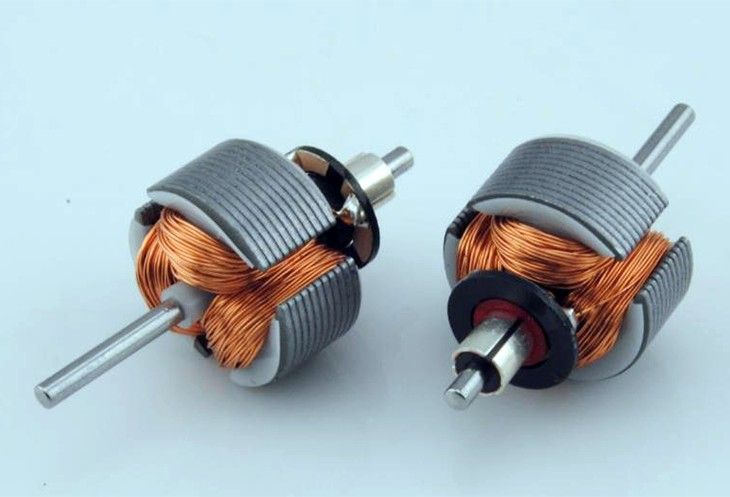Yn ferbettere-feiligens elektryske apparatuer, lykas eksploazjebestindige motoren, transformators, elektromagnetyske triedden, en ballasts foar fluorescent lampen, in diel befettet ynterne windings. De easken foar dizze windings, sawol meganysk as elektrysk, binne heger as dy foar standert windings.

Meastal, de isolearre tried brûkt foar winding dizze coils moat wêze dûbele isolearre, en de nominearre diameter fan 'e spoel moat net minder wêze as 0,25 mm.
Foar de enameled tried brûkt yn winding dizze coils, it is oan te rieden om te brûken GB / T6109.2-2008 “Polyester Enameled Round Koper Wire, Klasse 155,” GB/T 6109.5-2008 “Polyester-imide enameled rûne koperdraad, Klasse 180,” GB/T 6109.6-2008 “Polyimide enameled rûne koperdraad, Klasse 220,” of GB/T6109.20-2008 “Polyamide-imide gearstalde polyester of polyester-imide enameled rûne koperdraad, Klasse 220.”
Dêrneist, Klasse 1 enameled rûne koper tried lykas oantsjutte yn dizze noarmen kin brûkt wurde, op betingst dat it de relevante testen beskreaun yn 'e noarmen trochkomt.
Nei winding, in passend impregnating agent moat brûkt wurde om te ferbetterjen de isolaasje eigenskippen fan de windings.
It impregnaasjeproses moat de oantsjutte metoade fan de fabrikant folgje, mei help fan techniken lykas dipping, trickling, of vacuum druk impregnation (VPI) te foljen de gatten tusken winding triedden en soargje sterke adhesion. As de impregnating agent befettet solvents, de ympregnaasje en drogen moatte wurde útfierd twa kear te tastean oplosmiddel evaporation.
Meastal, metoaden lykas spuiten of coating foar isolearjende windings wurde beskôge as ûnbetrouber foar eksploazjebestindige elektryske apparatuer. Dêr moat yn de yngenieurpraktyk genôch omtinken oan jûn wurde.
Boppedat, foar hege spanning windings, de ympregnearre wikkelingen moatte wurde behannele mei anty-corona ferve om ekstra gefaren te foarkommen feroarsake troch corona-ûntladingen.
Yn elektryske apparaten mei ferbettere feiligens, oft motors, elektromagnetyske coils, of oare apparatuer syn coils, se moatte oer it algemien wurde útrist mei temperatuer beskermingsapparaten om te foarkommen dat limyttemperatueren te boppen binne ûnder normale operaasje of erkende abnormale omstannichheden.
As in winding net boppe de limyt temperatuer ûnder trochgeande overload (lykas in motorrotorslot), of as in winding is net ûnderwurpen oan overload (as in ballast foar fluorescent lampen), dan hat it gjin temperatuerbeskermingsapparaat nedich.
Wannear't ferbettere feiligens elektryske apparatuer is foarsjoen fan temperatuerbeskermingsapparaten, dizze kinne wurde ynstallearre itsij yntern of ekstern. Likefolle wat, de beskerming apparaat moat hawwe de passende eksploazje-proof type en moatte wurde beoardiele yn gearhing mei de beskerme apparatuer.
 Shenhai Explosion-Bewiis
Shenhai Explosion-Bewiis
